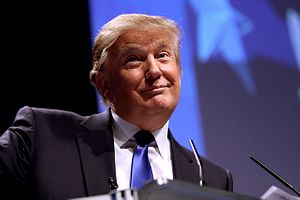While many scholars have been quick to suggest that a Trump presidency will dramatically reshape the geopolitical landscape of East Asia, at present, President-elect Donald Trump’s future foreign policy direction remains very much an unknown quantity. However, it is widely expected that the U.S. “pivot to Asia,” a legacy of Obama’s tenure in office — and which was expected to be continued by Trump’s opponent, former Secretary of State Hillary Clinton — will become much less of a focal point for the newly elected president. Therefore, the security dynamics of East Asia, and in particular, the Taiwan Strait will take on a number of new challenges over the coming years.
China, Taiwan and Cross-Strait Relations
Trump primarily sees China in economic terms. He believes the Chinese are currency manipulators, and has stated that he will call Beijing out on the matter on his first day in the office. What’s more, the president-elect has previously floated the idea of slapping tariffs as high as 45 percent on imports from China. Such a brazen move would likely complicate relations between the world’s two largest economies, with the prospect of a more protectionist United States hurting an emerging nation that’s still reliant on exports as its chief source of growth.
Up until now, Trump’s anti-China rhetoric has largely been aimed at economics and the country’s alleged manipulation of its currency to help maintain low export prices. What is not so clear is how Trump would treat an increase in Chinese expansionism and assertiveness in the region. Beijing could potentially see his appointment as an opportunity to keep strengthening their position and their role in the region. A disengaged, isolationist United States would give China a free hand to pursue territorial claims in the South China Sea, rejecting the recent court ruling against Beijing, knowing that there would little or no opposing voices in Washington.
While there is an assertion that just because Trump will be hard on China, he will seek favorable relations with Taiwan, this is not necessarily the case. True, Trump sees the Chinese as being responsible for a loss in American jobs, and a major obstacle in making America “great again.” However, he is inexperienced in foreign policy and he has no particular loyalty to any one side. Although Taiwan is likely to remain a key ally of the United States, Trump is unlikely to see Taiwan as anything more than a profitable market for the export of U.S.-made weaponry and armaments.
There is also an argument suggesting that Trump will use Taiwan as a bargaining chip to get a better deal from the Chinese. However, Trump is likely to be surrounded in foreign policy circles by veteran Republicans who have always kept a close relationship with Taiwan due to a mutual anti-communist stance. Furthermore, in July, the Republican National Convention repeated the “six assurances” given to Taiwan by then-U.S. president Ronald Reagan in 1982 and for the first time included these pledges in the official platform at the Republican National Convention. The assurances included not setting a date for ending arms sales to Taiwan, as well as giving commitments not to revise the Taiwan Relations Act or pressure Taiwan to enter into negotiations with China.
Even with such assurances, U.S. commitment to the Taiwan Relations Act hasn’t been seriously tested for a considerable number of years. Therefore, a combination of China’s increased assertiveness in the region alongside a disengaged United States has the potential to challenge the current status quo in cross-strait ties. In such a case it would be wise for Taiwan to splurge on its military budget, strengthening its image in Washington as a genuine ally and dispelling any notion that Taiwan is sponging off of the U.S. defense commitments of yesteryear. In any case, the businessman inside Trump would surely prove a willing seller to add to the multi-billion dollar deals signed off by the Obama government.
Taiwan and the Trans-Pacific Partnership
Another challenge thrown up in the aftermath of Trump’s election victory is the fate of the Trans-Pacific Partnership (TPP). The trade agreement between 12 Pacific rim countries had been one of President Barack Obama’s top second-term priorities and an integral part of his desired “pivot to Asia” to strengthen U.S. ties with its Pacific allies. The partnership was also seen by many as a bid to check the strength of a rising China in the region. The election of Trump and his protectionist economics, however, signals the end of the TPP, with both leading Democrats and Republicans suggesting that the proposed deal — yet to be ratified by Congress — is “dead.”
Taiwan’s path to TPP membership now seems all but over. Having membership to the pact would have granted Taiwan favorable access to a number of new trade partners; therefore the failure to bring it to fruition presents an opportunity for Beijing. The break up of the TPP is a tilt toward the Sinocentric order in East Asia, and brings China multiple benefits, with non-ratification giving Beijing a free path to dictate policy in the region.
Such circumstances should be a wake up call to Taiwan, which is in real danger of having its economy become over-reliant on neighboring China. The Taiwanese economy needs diversifying, and now is a good time for President Tsai Ing-wen to deliver on her pre-election promises to create a more diverse, innovation-led economy to revive international competitiveness.
David Prentice is a freelance journalist currently based in Taipei, Taiwan.

































